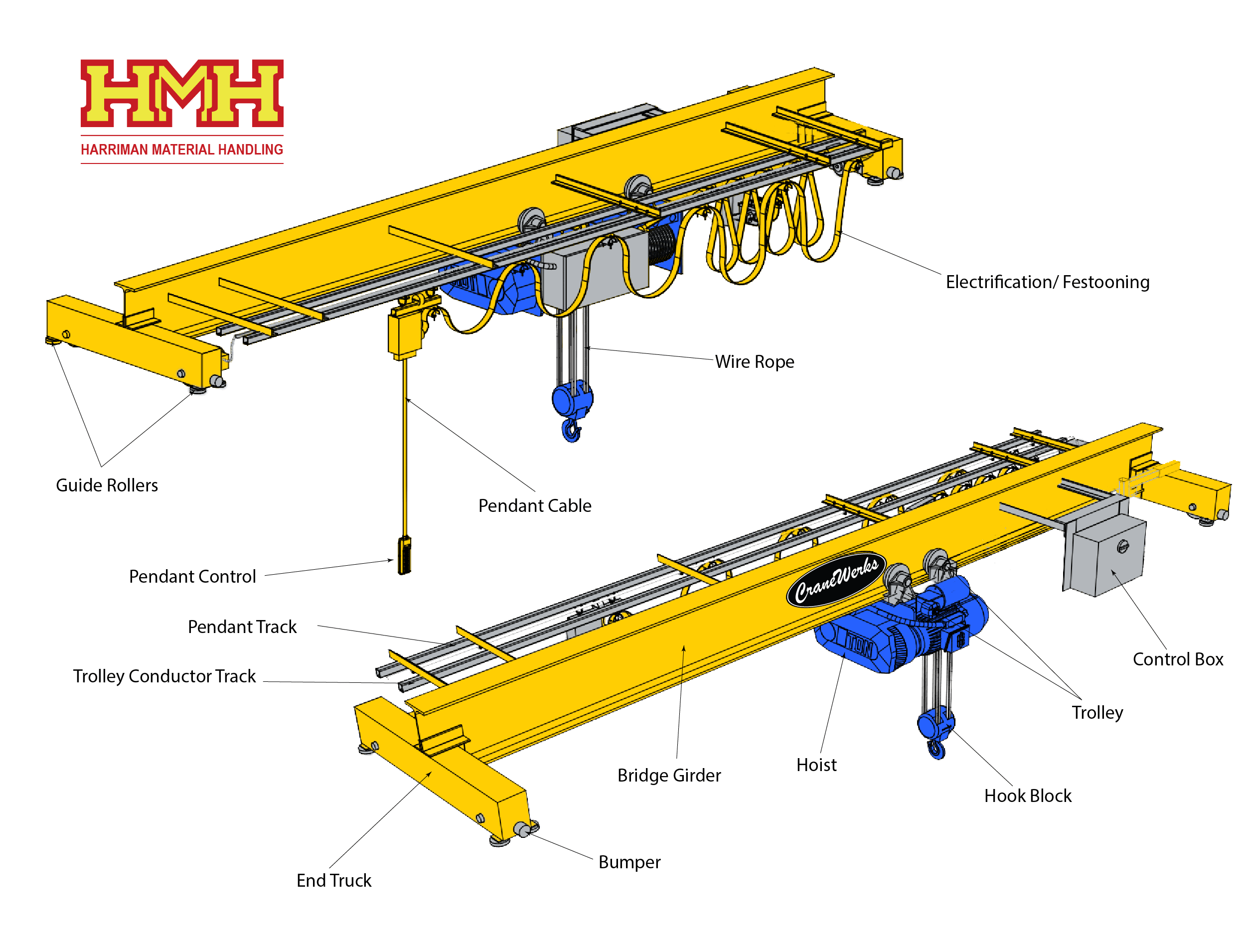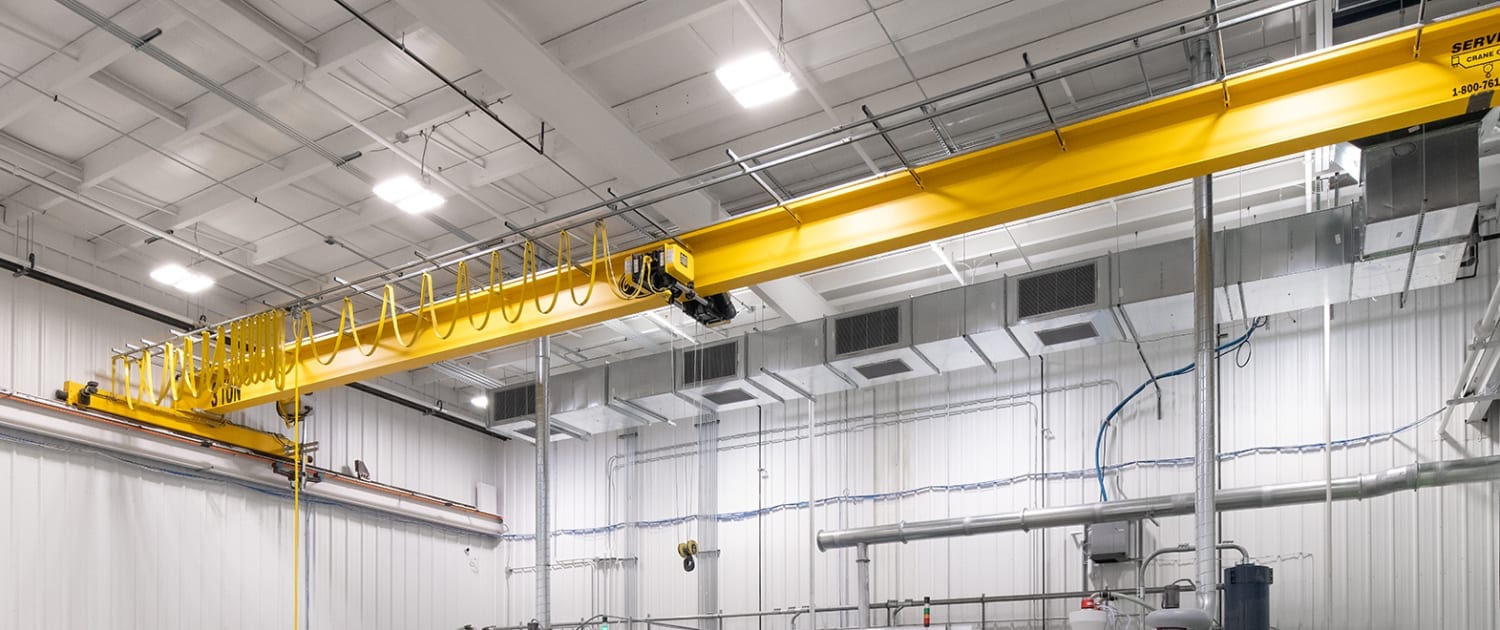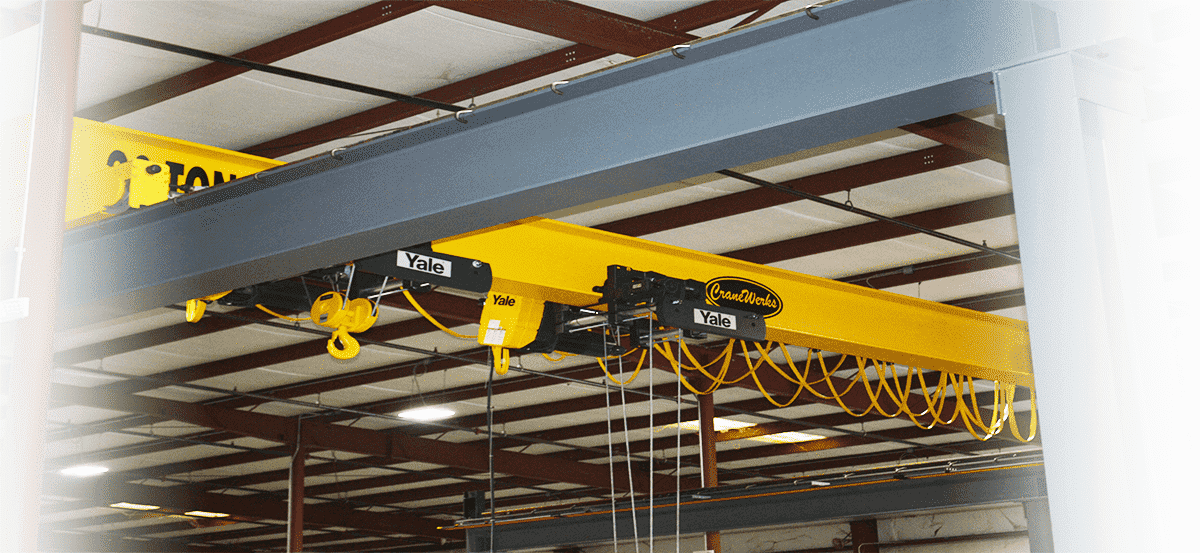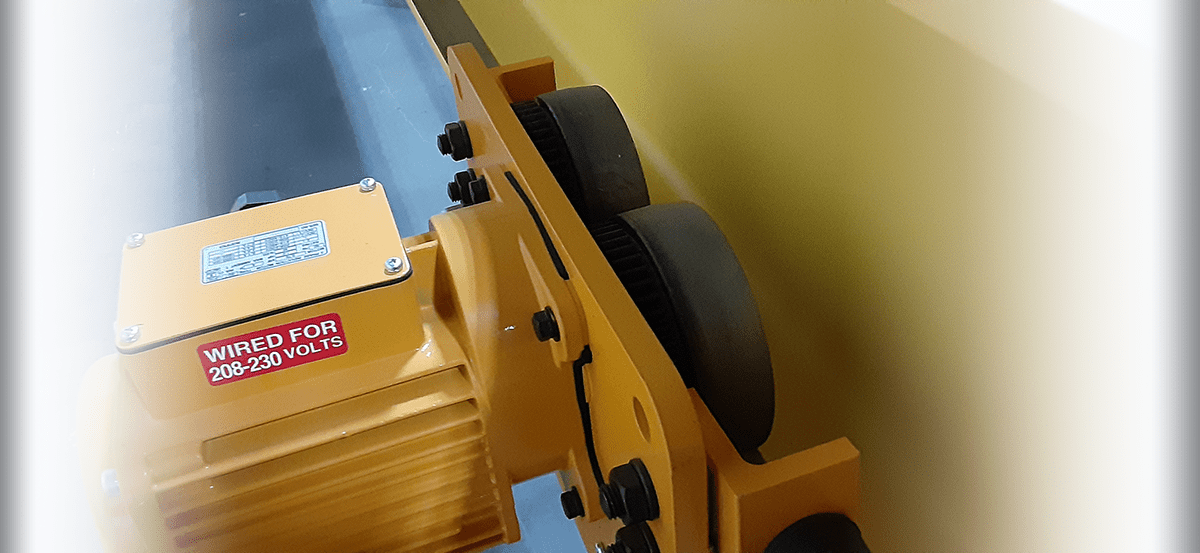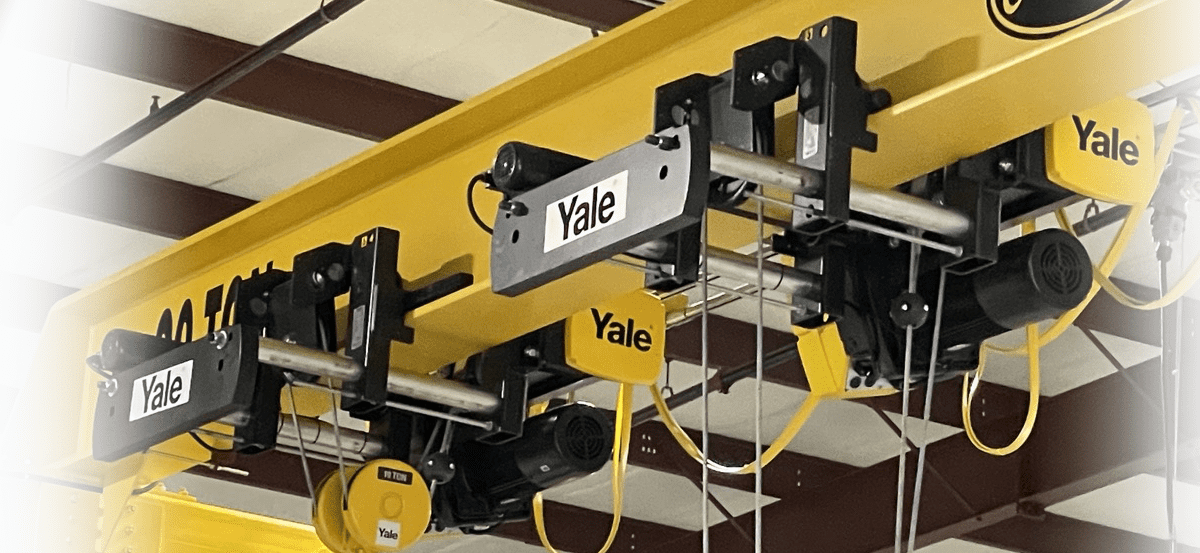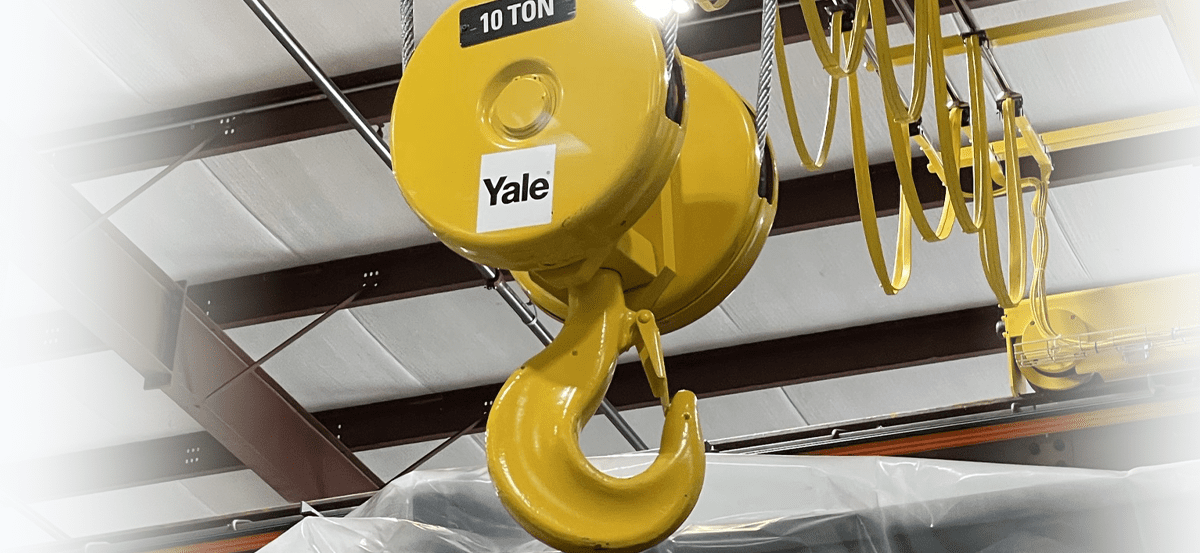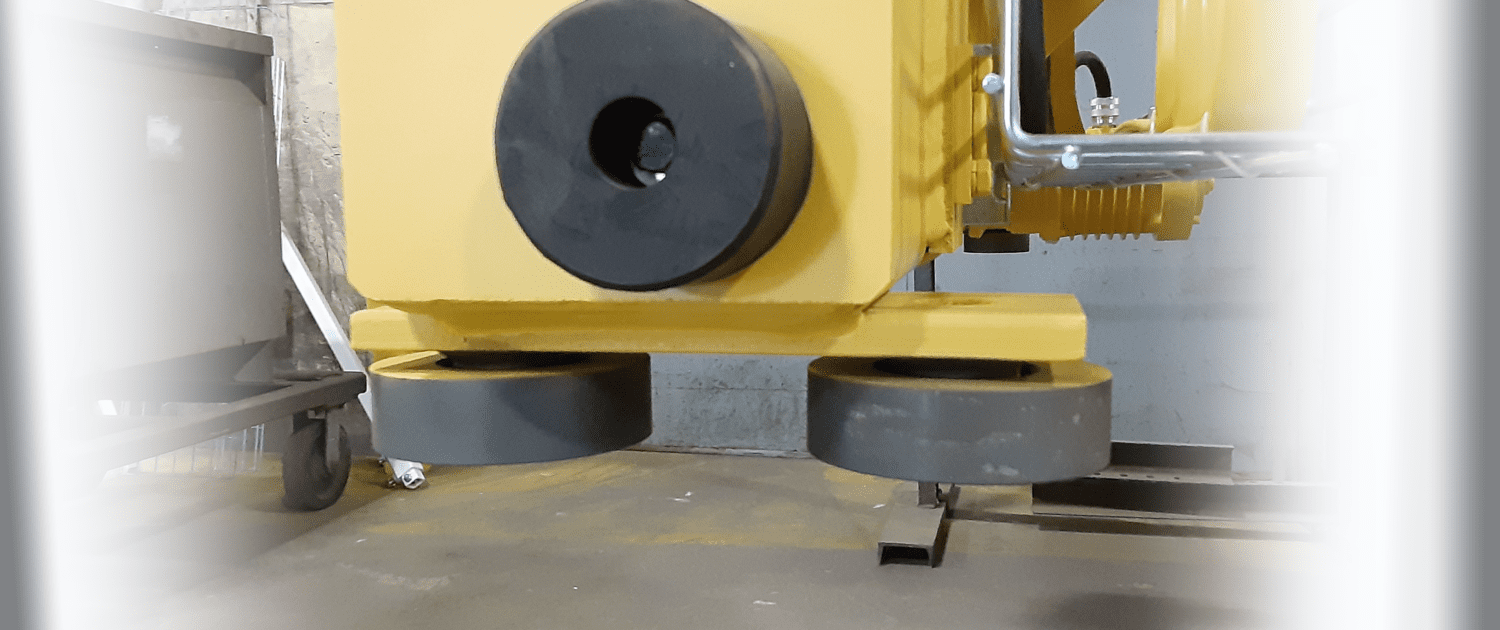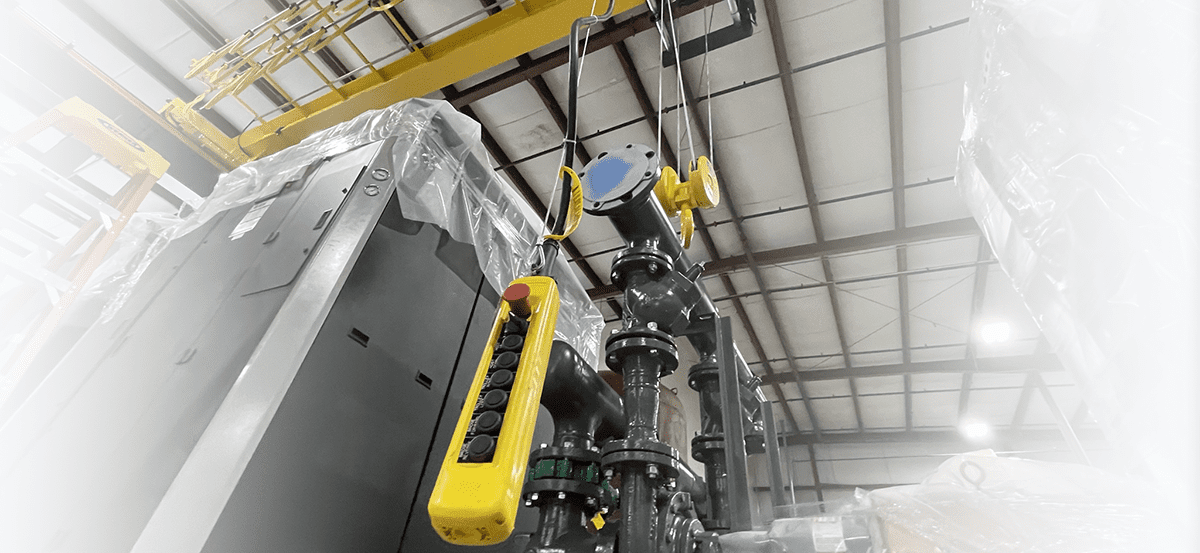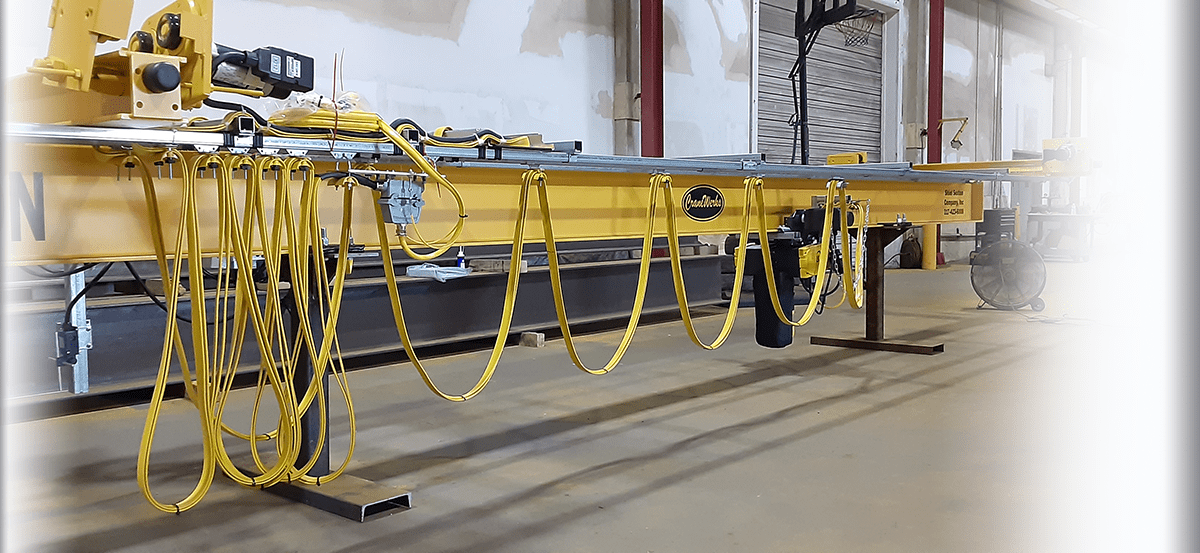OVERHEAD CRANE COMPONENTS
In order to get a better understanding of some terms used when describing the different types of overhead cranes, we’ll discuss the different parts and components of a crane, and how they can affect performance and design.
For additional information on the different bridge crane systems, visit our selection page here.
Bridge
A load-bearing beam that runs the width of the building. The primary structural component that connects the runways and moves the hoist forward and backward by use of a trolley. A bridge can be comprised of one or two beams—more often referred to as a single girder or double girder design. Girders can be made of rolled steel or can be fabricated by welding the beams into a steel box design. Please visit our Bridge Crane Systems section.
Runway
What the bridge crane travels on to move the crane up and down the bays. These are typically part of the building structure, as beams, and there are two per overhead bridge crane system. To learn more about runway options please visit our Crane Runways section.
Runway Rail
Rail supported by the runway on which the crane travels. Top-running cranes typically run on ASCE/ railroad rails. Gantry cranes can also utilize a rail or track system installed on the floor to move the bridge back and forth.
Trolley
The trolley is the mechanism that moves the hoist along the bridge girder of a crane. The hoist is moved horizontally along the top or underside of the bridge girder to position it above a load. There are three types of trolleys: low headroom, normal headroom and double girder trolley.
Hoist
The hoist is what makes the lift and holds, raises, or lowers the load using wire rope or chain. Hoists can be powered manually, with electricity, or with compressed air. Harriman is an authorized distributor of many industry standard hoists manufacturers. To learn more about hoist offerings visit our Hoists section.
Hook Block
A hook block is an assembly to which the hook of a hoist or crane is attached; it typically consists of a steel enclosure housing a number of sheaves or pulleys that carry the ropes or chains that facilitate the lifting of a load. Although this sounds unnecessarily complex, it would be impossible for a crane or hoist to operate efficiently and safely if the crane hook was simply attached directly to a rope and then raised or lowered by the cranes boom and winch system. A hook block allows for a considerable amount of flexibility and safety in lifting operations as opposed to a direct connection.
Bumpers
Bumpers are designed to absorb the crane’s energy and reduce impact—bringing the crane to rest in a controlled manner and minimizing forces when the crane or trolley reaches the end of its travel. Bumpers can be attached to the bridge, trolley, or runway stop.
Controls
Controls are typically mounted in a panel on the crane or hoist and the pendant or remote console allows the operator to run the crane. The controls operate the drive and hoist motors, and can control Variable Frequency Drives (VFDs) to control hoist speed for precise load positioning. Harriman carries additional saftey control devices such as the Safe-E-Stop and the Overhead Lifting Information (OLI) app from R&M Material handling.
Electrification
Insulated conductor bars, festoon systems (flat cables), or cable reels bring power to the crane from the building.
The festoon is the wiring and support system that delivers power to a trolley and hoist across the bridge. Power is collected from the runway busbar and carried into the main bridge panel, which powers all the crane’s electronics. From there, festoon cables carry power to the hoist panel and the bridge drives, which run the hoist, trolley and bridge drive. For maximum productivity and safety, most operators rely on a pendant or radio to control the movement of the crane.

